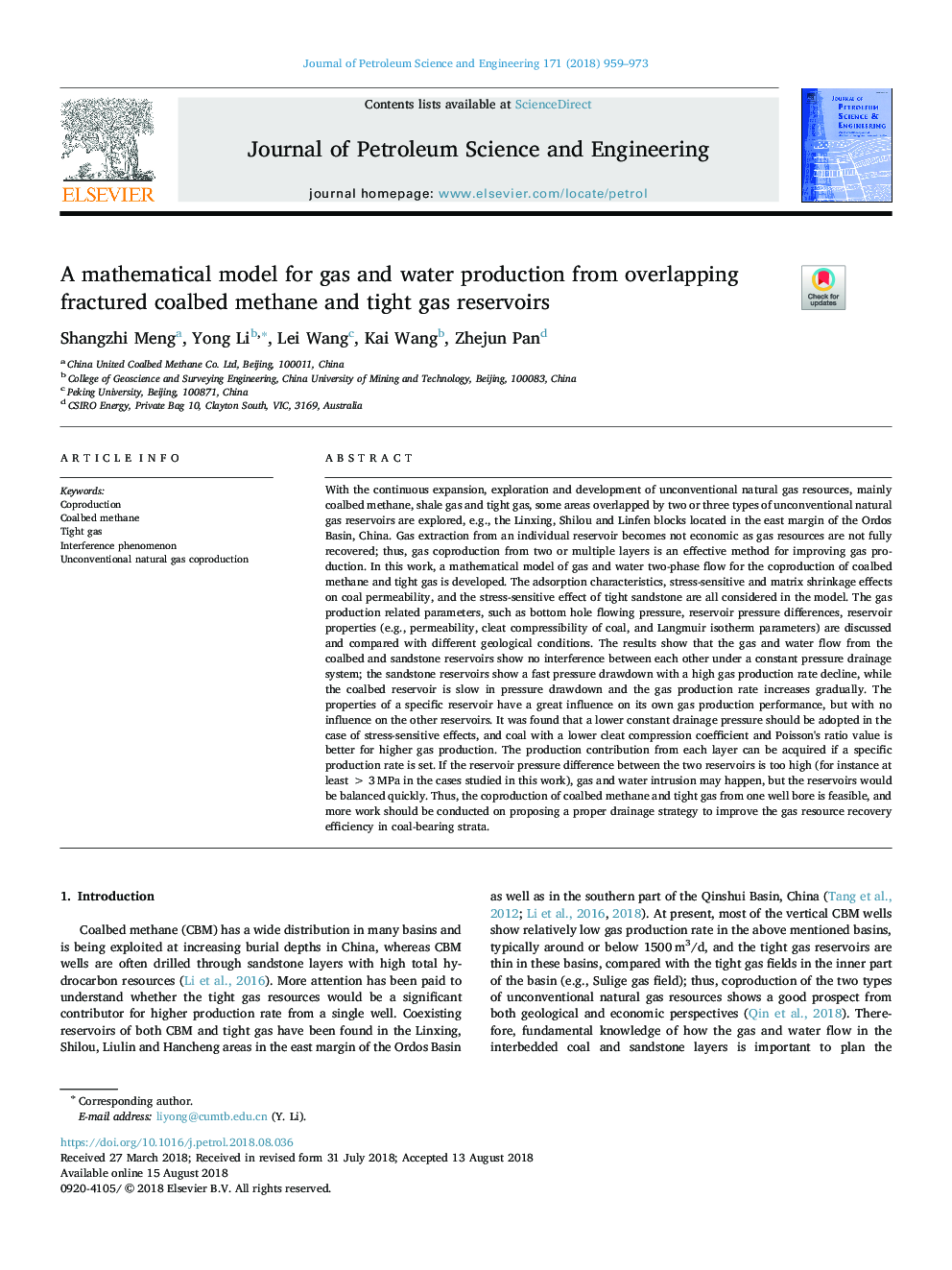| Article ID | Journal | Published Year | Pages | File Type |
|---|---|---|---|---|
| 8124370 | Journal of Petroleum Science and Engineering | 2018 | 15 Pages |
Abstract
With the continuous expansion, exploration and development of unconventional natural gas resources, mainly coalbed methane, shale gas and tight gas, some areas overlapped by two or three types of unconventional natural gas reservoirs are explored, e.g., the Linxing, Shilou and Linfen blocks located in the east margin of the Ordos Basin, China. Gas extraction from an individual reservoir becomes not economic as gas resources are not fully recovered; thus, gas coproduction from two or multiple layers is an effective method for improving gas production. In this work, a mathematical model of gas and water two-phase flow for the coproduction of coalbed methane and tight gas is developed. The adsorption characteristics, stress-sensitive and matrix shrinkage effects on coal permeability, and the stress-sensitive effect of tight sandstone are all considered in the model. The gas production related parameters, such as bottom hole flowing pressure, reservoir pressure differences, reservoir properties (e.g., permeability, cleat compressibility of coal, and Langmuir isotherm parameters) are discussed and compared with different geological conditions. The results show that the gas and water flow from the coalbed and sandstone reservoirs show no interference between each other under a constant pressure drainage system; the sandstone reservoirs show a fast pressure drawdown with a high gas production rate decline, while the coalbed reservoir is slow in pressure drawdown and the gas production rate increases gradually. The properties of a specific reservoir have a great influence on its own gas production performance, but with no influence on the other reservoirs. It was found that a lower constant drainage pressure should be adopted in the case of stress-sensitive effects, and coal with a lower cleat compression coefficient and Poisson's ratio value is better for higher gas production. The production contribution from each layer can be acquired if a specific production rate is set. If the reservoir pressure difference between the two reservoirs is too high (for instance at leastâ¯>â¯3â¯MPa in the cases studied in this work), gas and water intrusion may happen, but the reservoirs would be balanced quickly. Thus, the coproduction of coalbed methane and tight gas from one well bore is feasible, and more work should be conducted on proposing a proper drainage strategy to improve the gas resource recovery efficiency in coal-bearing strata.
Keywords
Related Topics
Physical Sciences and Engineering
Earth and Planetary Sciences
Economic Geology
Authors
Shangzhi Meng, Yong Li, Lei Wang, Kai Wang, Zhejun Pan,
